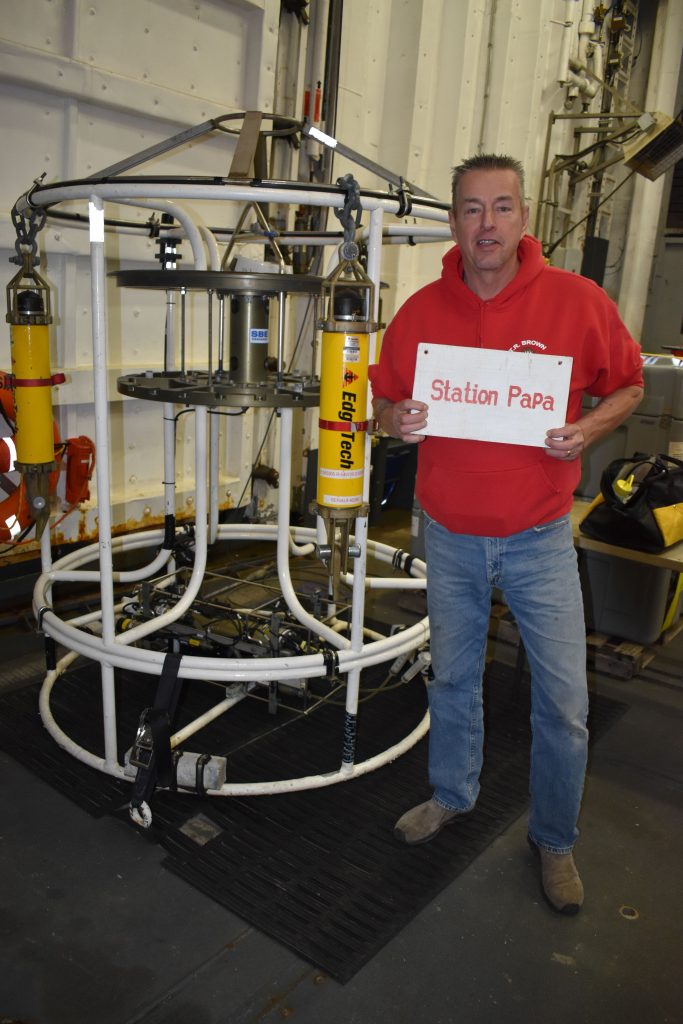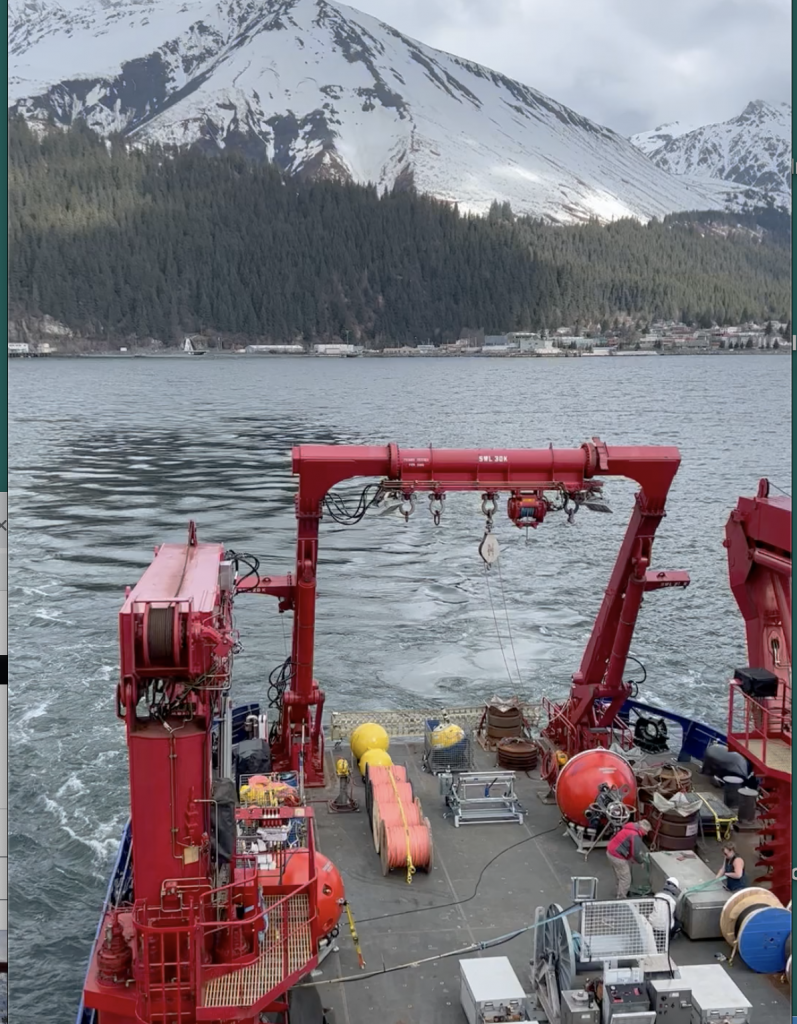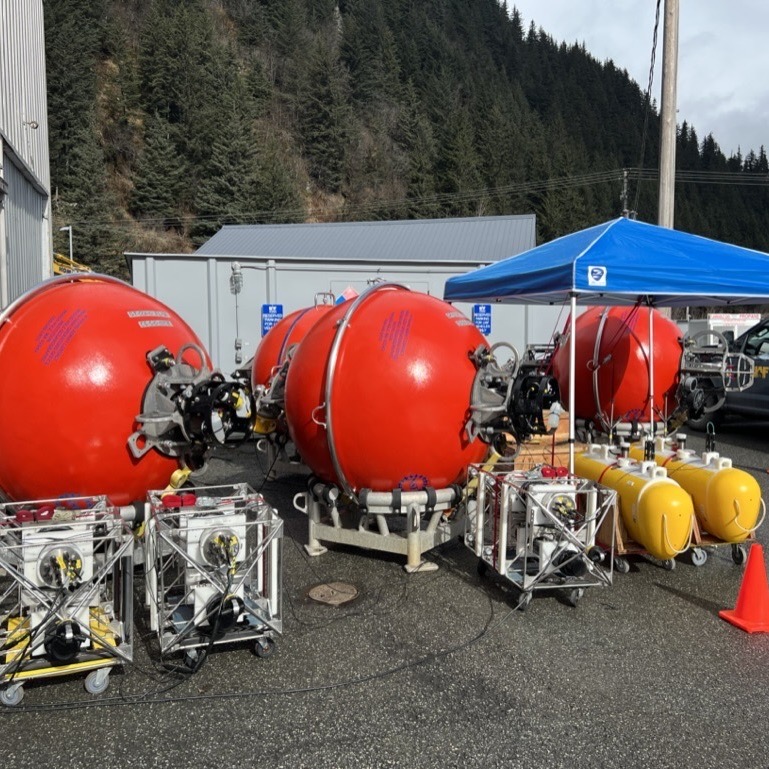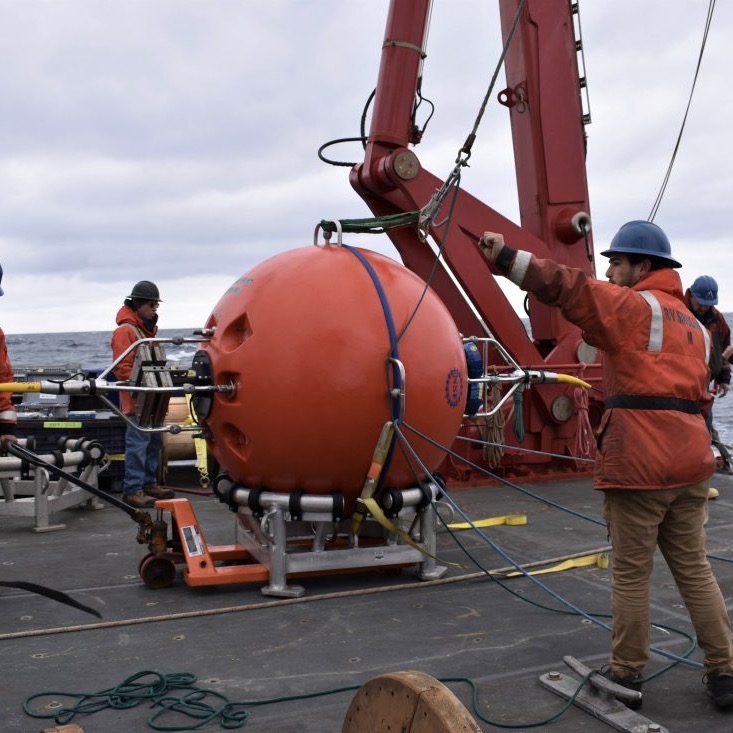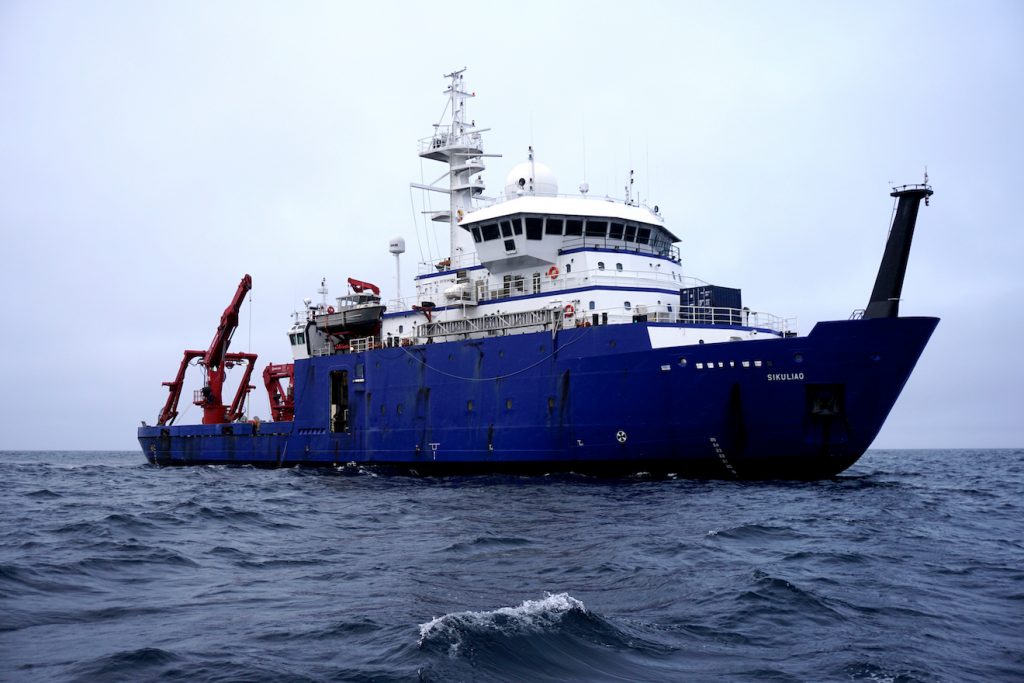Station Papa 10
Acoustic Tests
Here Jim Dunn of WHOI prepares acoustic releases for a test deployment. They will be lowered into the water and test actuated using an acoustic signal. The acoustic releases are integral to the Papa mooring deployments and Jim will make sure they are all functional before mooring operations begin.
Read MoreMoorings Tested and Assembled
Following the loading of the equipment on the RV Sikuliaq, the moorings are assembled and tested during the transit to the Station Papa site.
Read MoreAnd They Are Off
With beautiful Seward, Alaska as the backdrop, RV Sikuliaq departs for the Station Papa 10 mooring and glider deployment expedition.
Read MoreEssential Equipment
Most people think about the instrumentation and the electronics on the OOI moorings. But the moorings wouldn’t hold position for 12 months through stormy weather without these pieces of equipment! These are the subsurface mooring 6000 lb mace anchors needed to keep everything in place.
Read MoreMobilization Underway
Papa mobilization has begun. The first thing the team does is offload containers of equipment and build the moorings. James Kuo, Nico Llanos, and Dan Bogorff assemble the subsurface moorings, including the profiling vehicles, and begin system testing prior to loading the vessel.
Read MoreHeading to Seward
A team of 10 scientists and engineers from Woods Hole Oceanographic Institution and the University of Washington are headed to Seward, Alaska to load the R/V Sikuliaq for the tenth turn of the Global Station Papa Array. This annual spring “turn” of the Array is no small undertaking. A successful turn requires months of equipment…
Read MoreR/V Sikuliaq
The 261-foot R/V Sikuliaq is one of the most advanced university research vessels in the world, capable of breaking ice up to 2.5 feet thick.
Pronounced [see-KOO-lee-auk], the vessel is owned by the National Science Foundation and operated by the College of Fisheries and Ocean Sciences at the University of Alaska Fairbanks, as part of the U.S. academic research fleet.
Read More